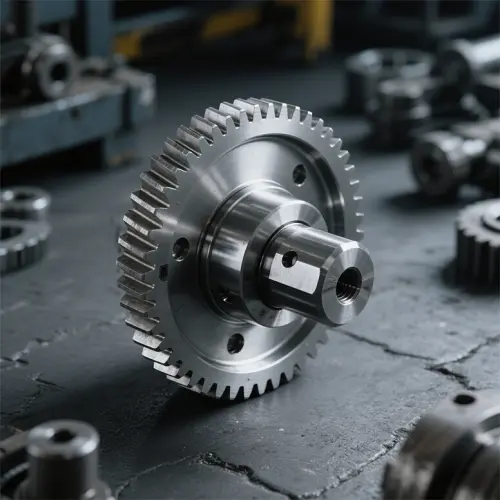
Knowledge
Analysis of Motor Shaft Material Selection and Characteristics

Selection Principles for Motor Shaft Materials
As a core component of the motor, the motor shaft has strict performance requirements: it must have high strength, excellent rigidity, and good wear resistance to ensure stability during high-speed rotation and avoid excessive heat generation and vibration. Therefore, when choosing motor shaft materials, the following aspects should be considered:
1. Microstructure and grain size: Materials with fine microstructure and small grain size usually have higher strength and hardness, which can effectively resist fatigue and thermal fatigue fractures.
2. Heat resistance: During high-speed rotation, the motor shaft generates high heat due to friction and increases the surface temperature. Therefore, materials with excellent high-temperature resistance and thermal fatigue resistance should be selected.
3. Wear resistance: The motor shaft is subject to severe wear during high-speed rotation, so materials with high hardness and good wear resistance should be chosen.
4. Machinability: Due to the complex structure and precise machining requirements of the motor shaft, materials that are easy to machine and have good formability should be selected.
5. Cost factors: Consider reasonable material selection based on actual application needs and economic costs.
Characteristics of Various Materials
1. 45# Steel: It is low in price and has good processing performance, suitable for low-load and low-speed applications. However, its strength and hardness are relatively low, making it unsuitable for high-load and high-speed scenarios.
2. 40Cr Steel: It has higher strength and hardness, suitable for medium to high-load and medium to high-speed applications. However, its welding performance is poor and requires special treatment.
3. 20CrMnTi Steel: With its outstanding strength and hardness, it is an ideal choice for high-load and high-speed operating environments. Additionally, it exhibits excellent heat resistance and superior hardenability.
4. 42CrMo4: It is used to manufacture forgings that require higher strength and larger quenched sections than 35CrMo steel, such as large gears for locomotive traction, turbocharger transmission gears, rear axles, highly loaded connecting rods, and spring clips.
5. 20MnCr5: As an alloy structural steel and carburizing steel, it combines high strength and high toughness with excellent hardenability. After heat treatment, its performance surpasses that of 20Cr steel. Moreover, it features small quenching deformation, good low-temperature toughness, and better machinability, although its welding performance is relatively low. It is generally used after carburizing and quenching or tempering.
6. Stainless Steel: It has good corrosion resistance and is suitable for humid, corrosive environments and high-temperature conditions. However, its strength and hardness are relatively low.
7. AISI 431 Stainless Steel, also known as SS431, is a martensitic stainless steel with some magnetic properties, making it suitable for magnetic applications. It is renowned for its high strength, hardness, and excellent corrosion resistance, and is widely used in the manufacture of bearings, bolts, valves, shafts, and other mechanical components. Due to its excellent wear resistance, it is particularly suitable for high-load and high-wear environments. For example, Vigor's AISI 431 motor shafts have a hardness range of 25HRC to 48HRC. Through special surface treatments such as quenching and tempering, its wear resistance can be further enhanced. The chemical composition of AISI 431 stainless steel includes 15.00-17.00% chromium and 1.25-2.50% nickel, which endow it with excellent corrosion resistance, especially in chloride environments. Additionally, it has good wear resistance and fatigue resistance, making it suitable for manufacturing parts that require high strength and wear resistance, such as bearings, valves, and pump shafts.
8. Cemented Carbide: It has extremely high hardness and wear resistance, suitable for high-speed, high-load, and harsh environments. However, its processing difficulty and cost are relatively high.
In conclusion, choosing the material for motor shafts requires considering multiple factors, including mechanical properties, heat and wear resistance, and processing formability. Selecting the appropriate material after comprehensive consideration can effectively increase the service life and working efficiency of motor shafts.
If you have any question, demand, new parts development or improve your supply chain, please feel free to contact us info@castings-forging.com



